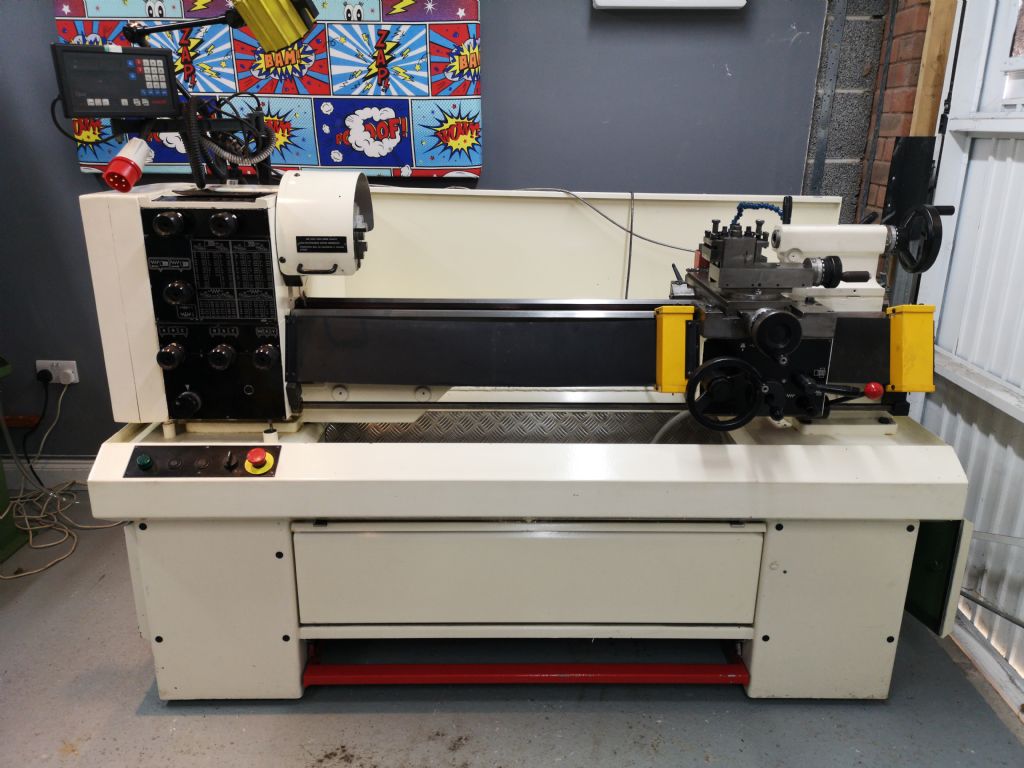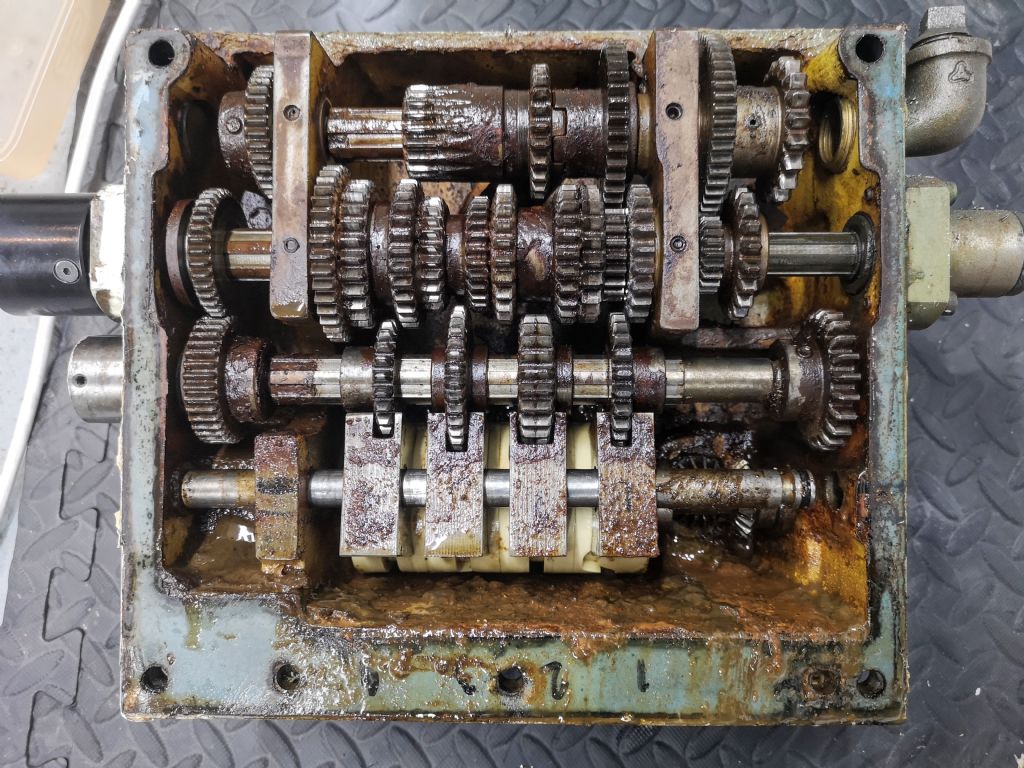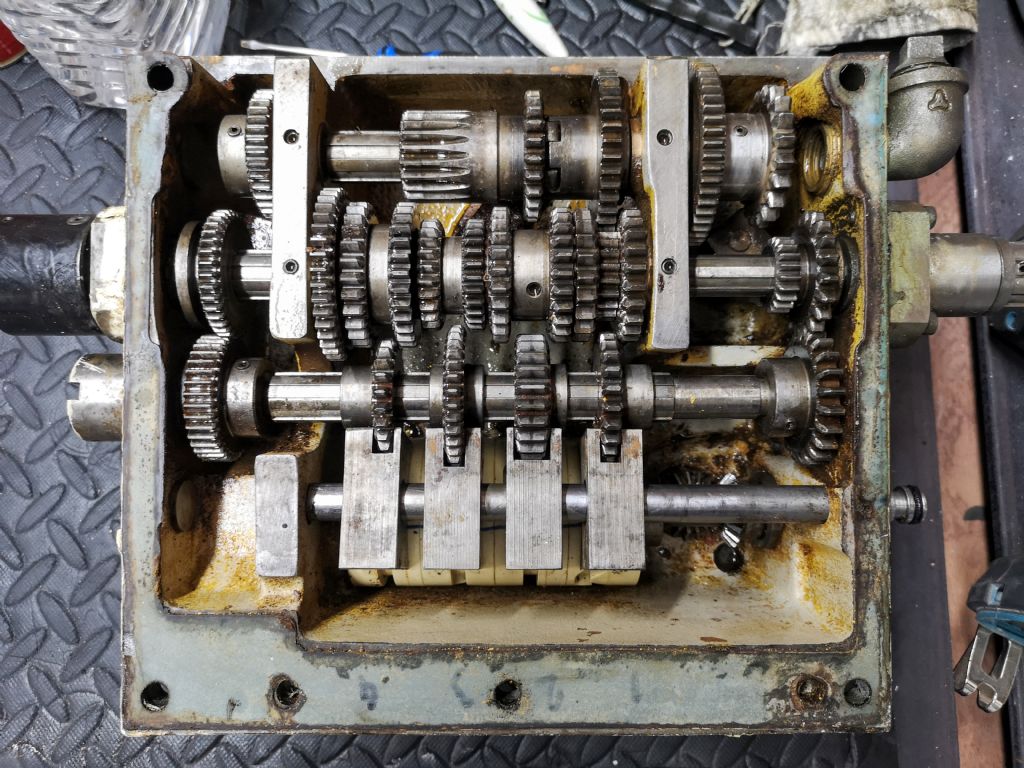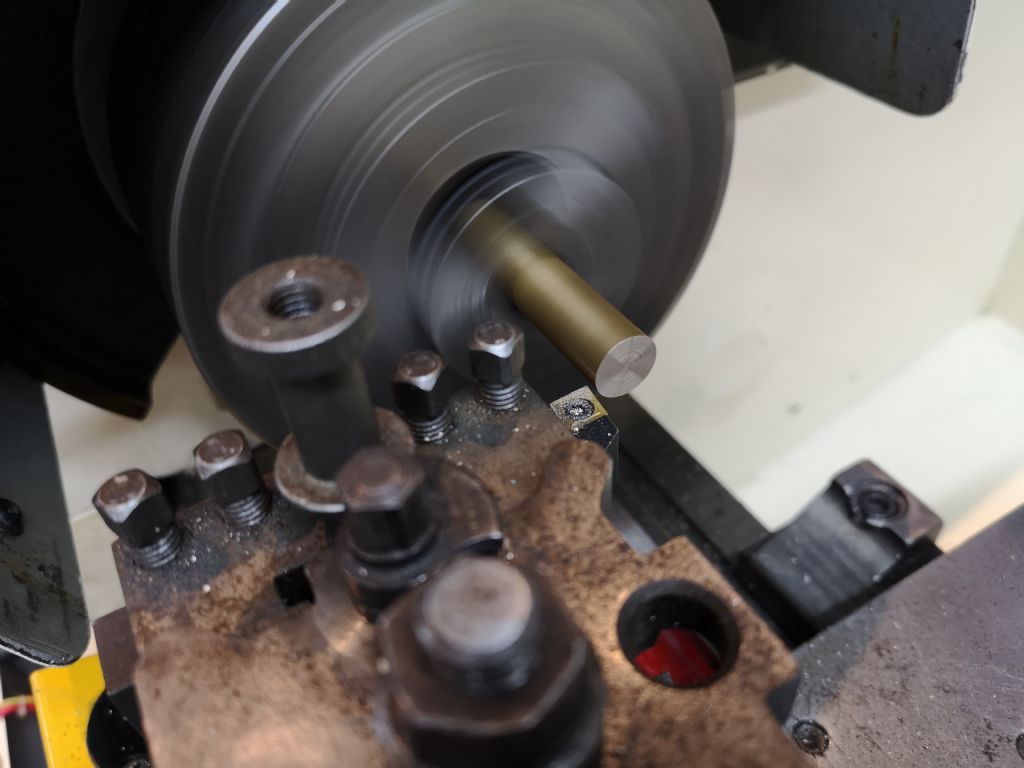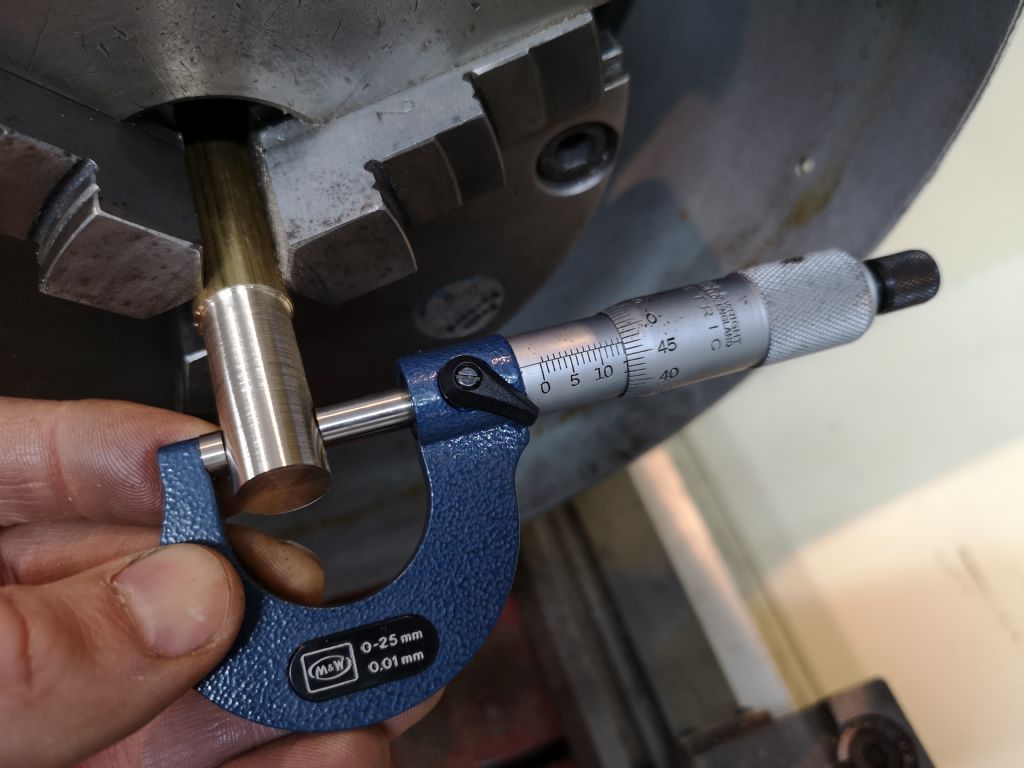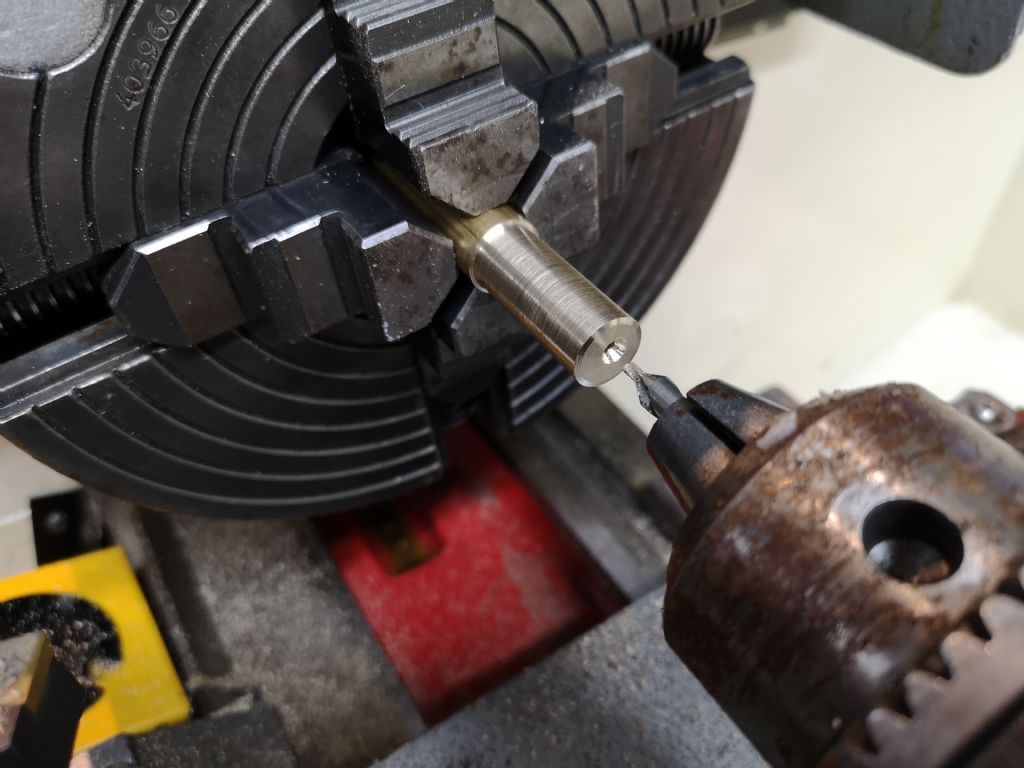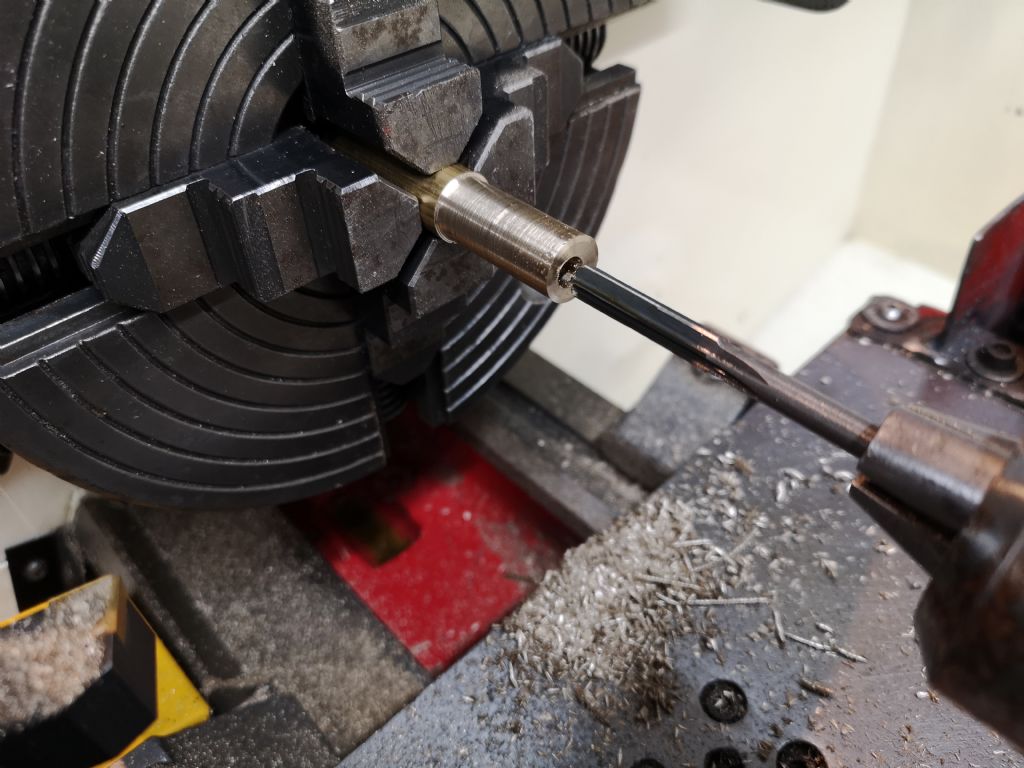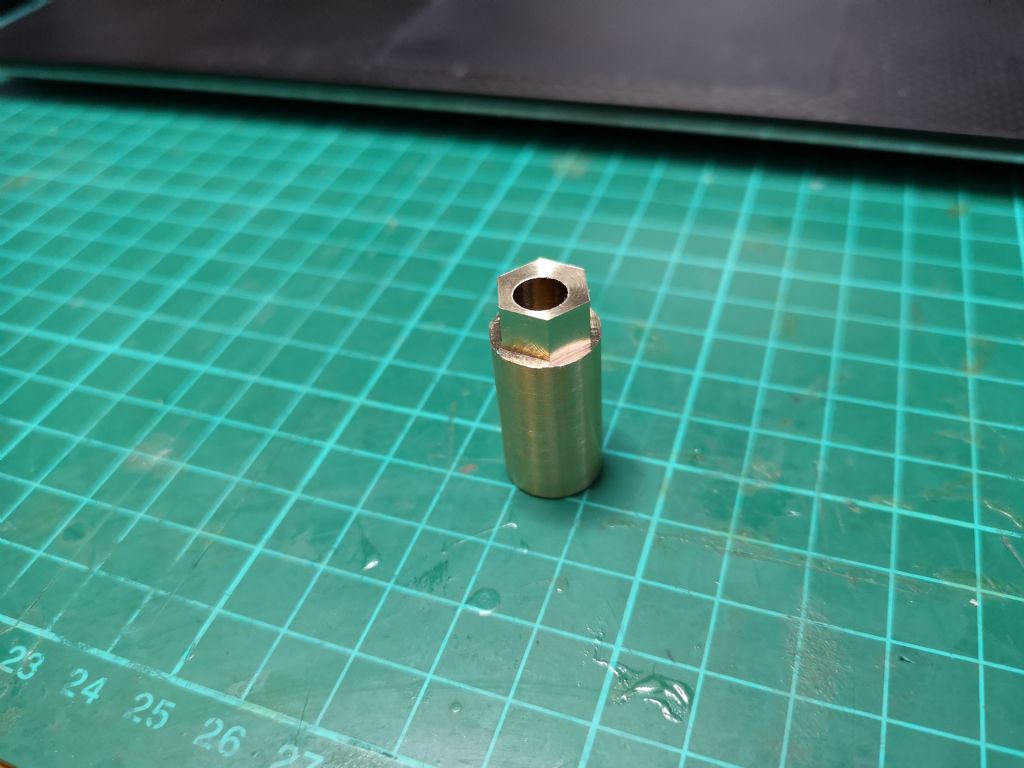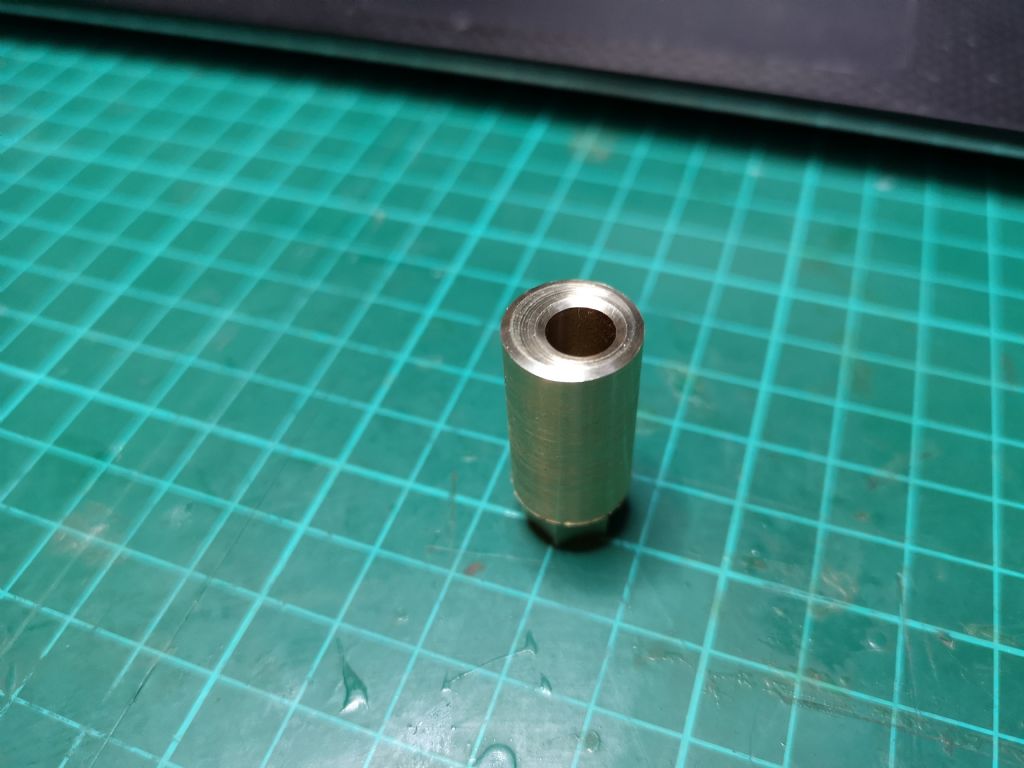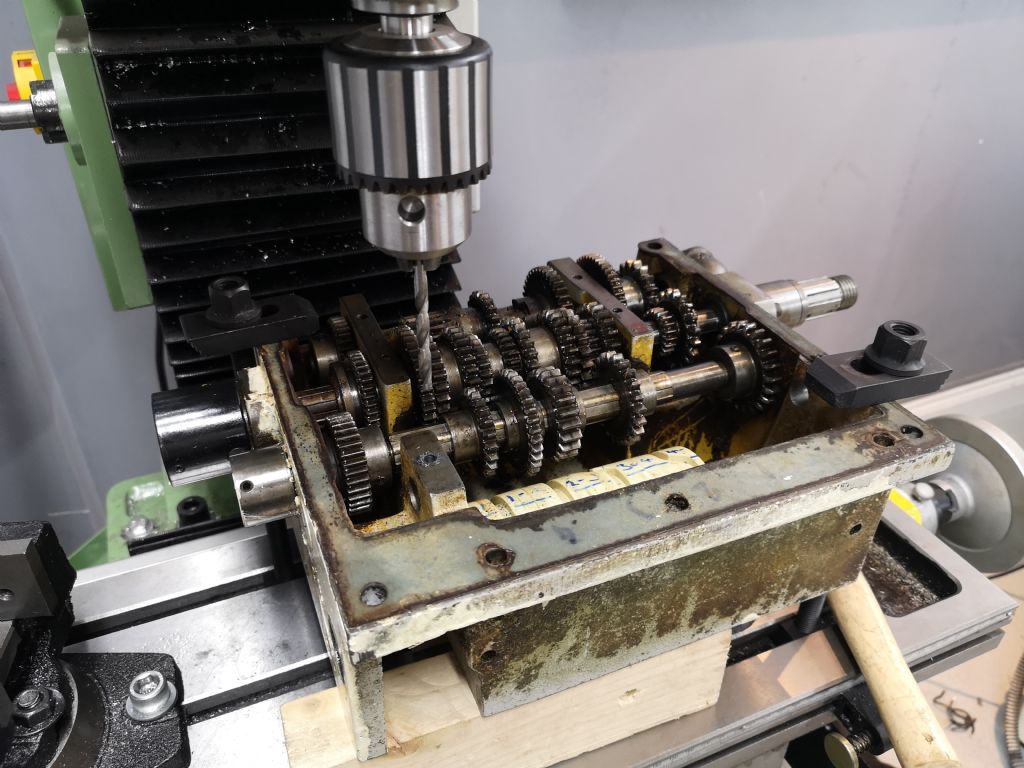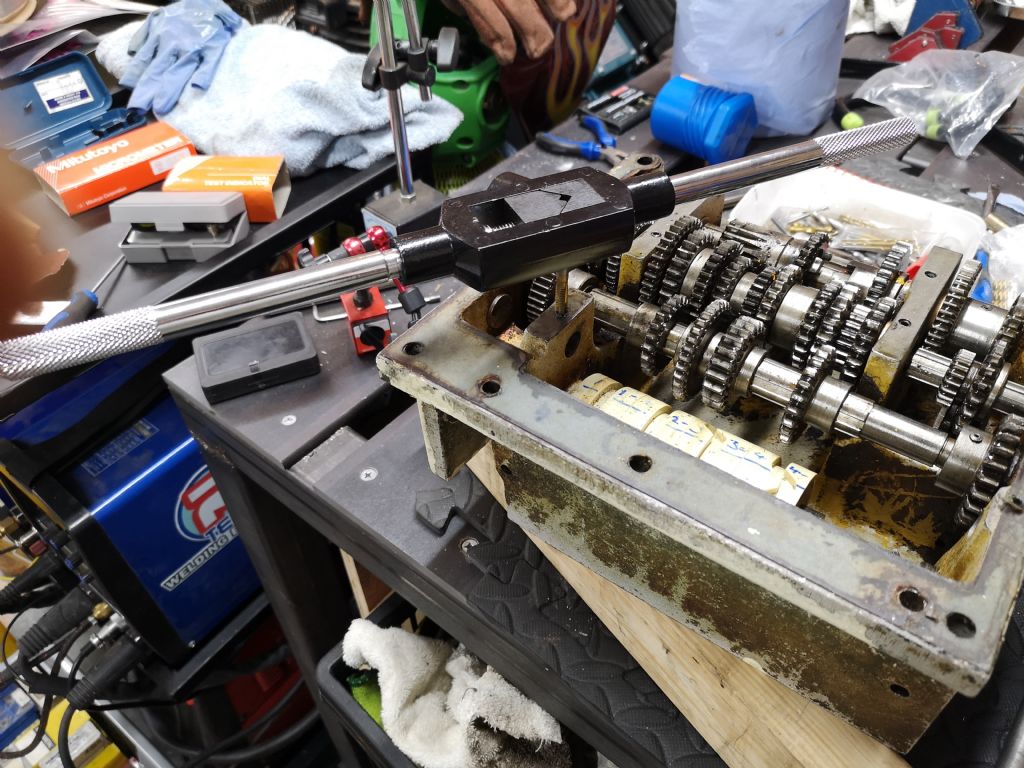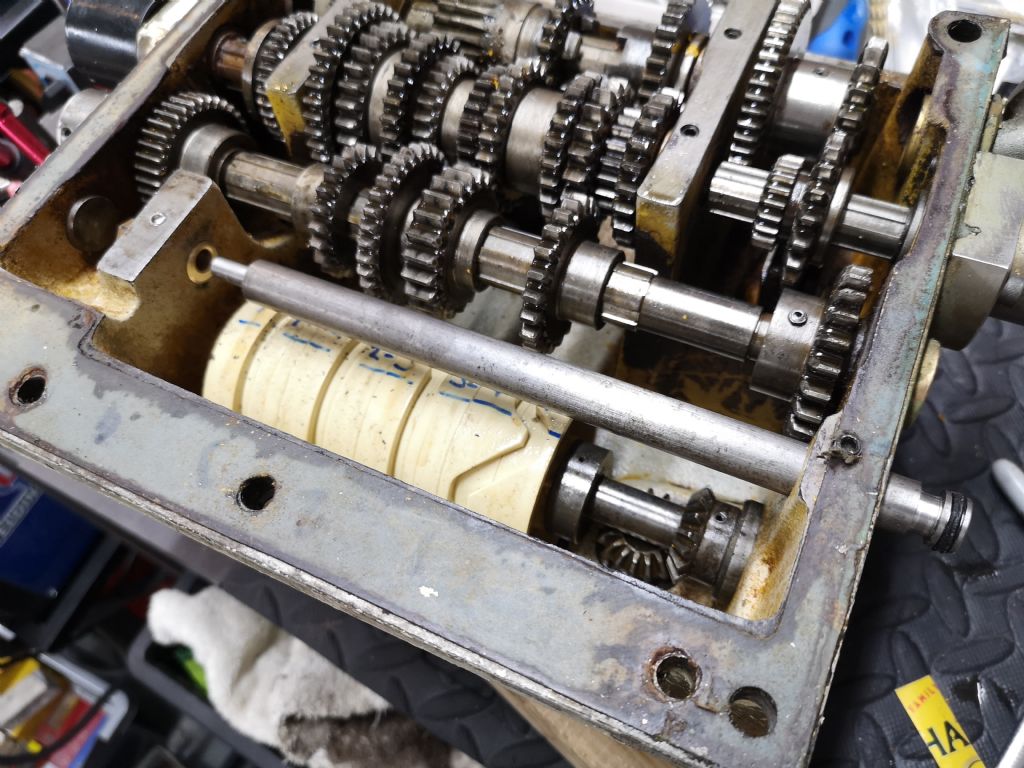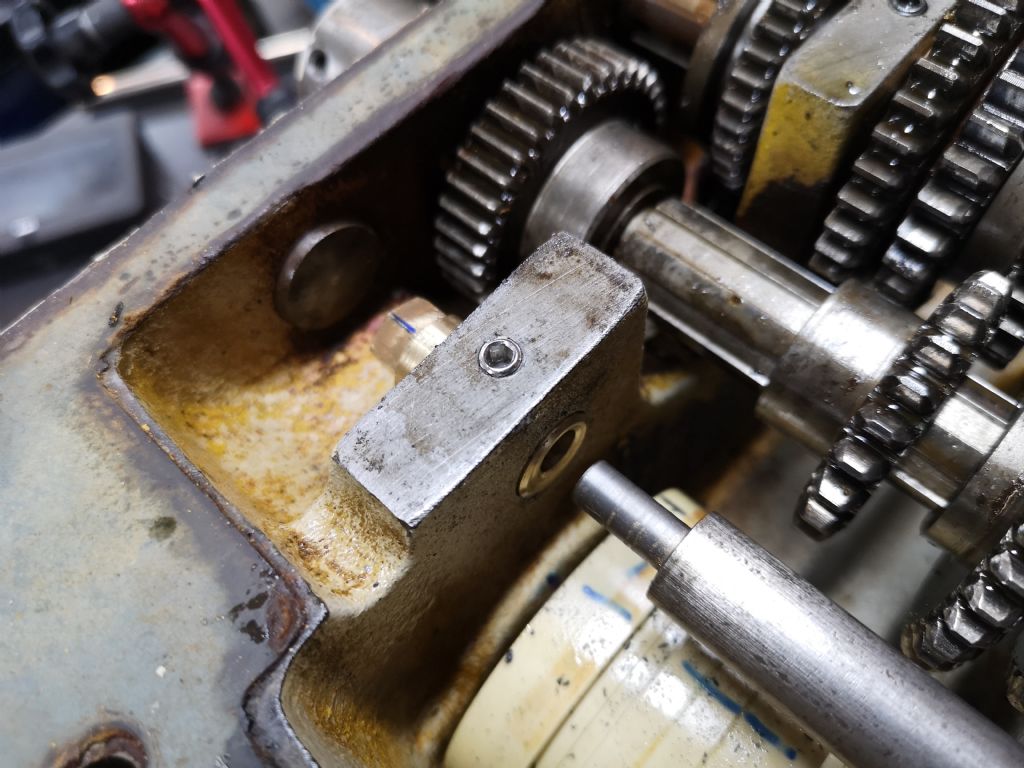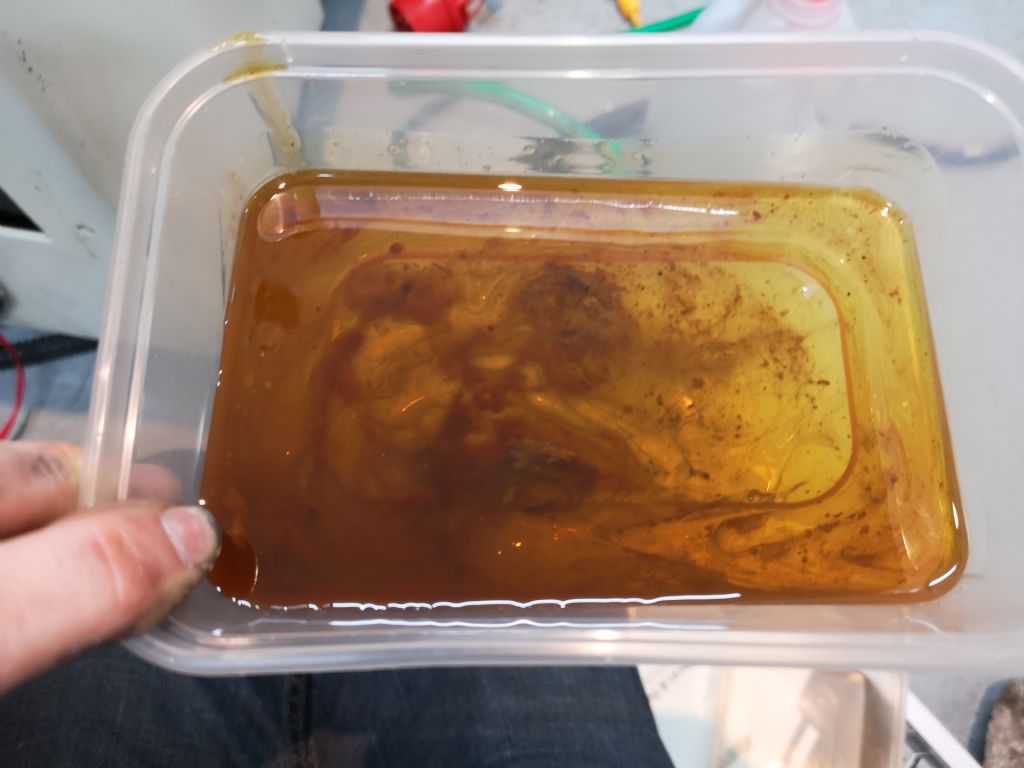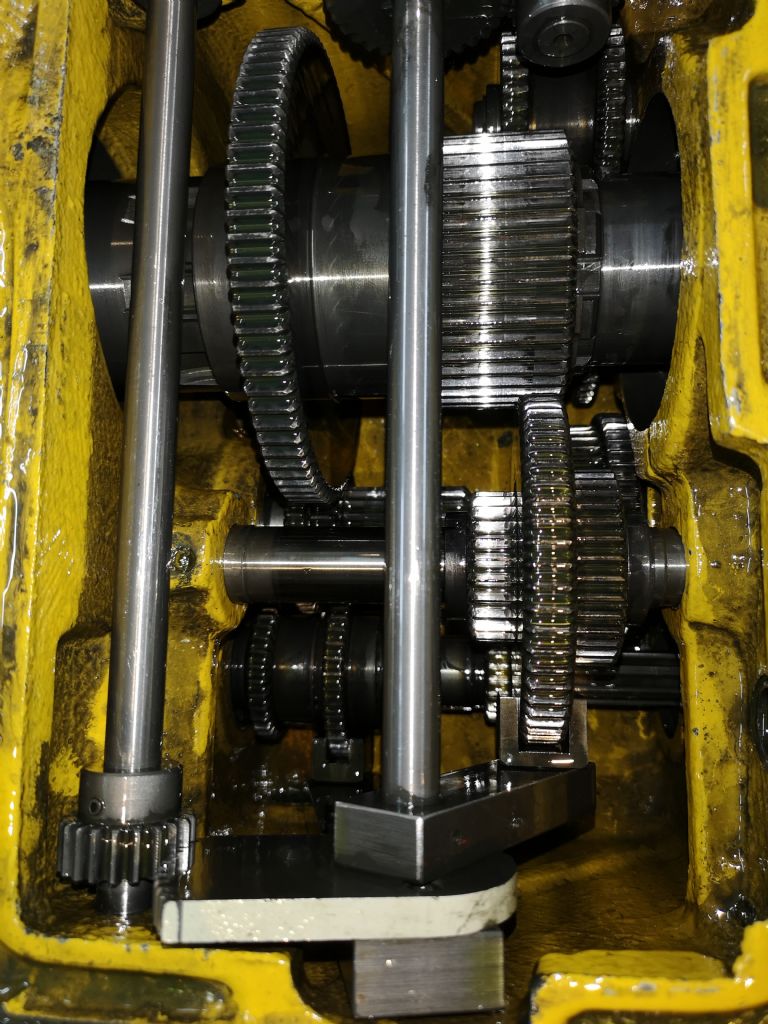After ~2 years of searching, I finally managed to source a suitable lathe.
She's a 1995 Harrison M300 – Long Bed [40"]

Pretty, no?
I actually took a bit of a punt on this one, as Covid-19 prevented a viewing.
Most things turned out well. It's in pretty good condition overall.
However, when I tested the screwcutting gearbox, the feed selector was jammed and the leadscrew skipped.
I feared the worst; chewed-up gearing, missing teeth etc. My heart sank.
After some guidance from the wonderful folks over on the Harrison Lathe Group (https://groups.io/g/HarrisonLathe), it transpires that there are a couple of known issues with the M300 SC gearboxes. Firstly, the oil can gum up the workings. Secondly, the delrin cams can expand over time, ceasing the feed selector. Hopefully it's one of these issues.
Well, there's only one way to find out.

The gears look like they're in good shape – no missing teeth. Phew!
Gave it a good clean and fished what turned out to be one of the external plugs out from under the cams. No idea how it would have made it into the gearbox. I had hoped that this was the cause of the jamming. No such luck I'm afraid.
Anyway, gave her a good clean.

I'll save you from all the gory details (for those wishing to delve into those you can see the link just below). The issue was expanded delrin cams. There are a couple of options available to fix this. Firstly, one can mount them on an arbor and turn them down. However, since I have never used a lathe before, let alone turned delrin (requiring a honed HSS tool turned not too fast so as to melt it, etc) and the fact that they are an expensive part to replace if I mess the up (£160 – thanks Harrison!), I decided on the second option.
https://groups.io/g/HarrisonLathe/topic/m300_newer_type_screw/73407135?p=,,,20,0,0,0::recentpostdate%2Fsticky,,,20,2,0,73407135
Option 2 was to capitalise on the fact that any movement (i.e. any direction) of the cam follower shaft seemed to free up the binding. So first I made up a new cam follower shaft (so as not to chance scrapping the original part), turn down one end and place it into a brass cam, which can be tuned.
This is my first ever turning operation.
Faced:

Turned down to the same diameter as the original part (bang on  ).
).

Centre then twist drilled:

Reamed:

Hex milled on the end for fine tuning (this is to be removed later):


Tuned:

Hole for grub screw drilled:

Tapped:

Fit-up:


And … it verked! o/
Phew!
Edited By Lee Jones 6 on 17/05/2020 09:48:21
Edited By Lee Jones 6 on 17/05/2020 09:48:37
Edited By Lee Jones 6 on 17/05/2020 09:49:33
Lee Jones 6.


